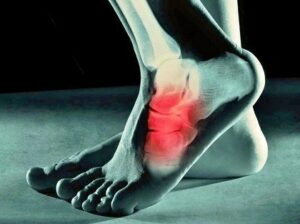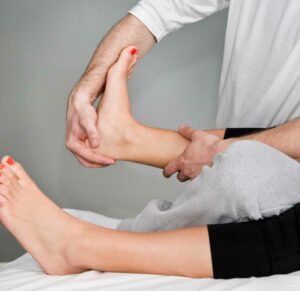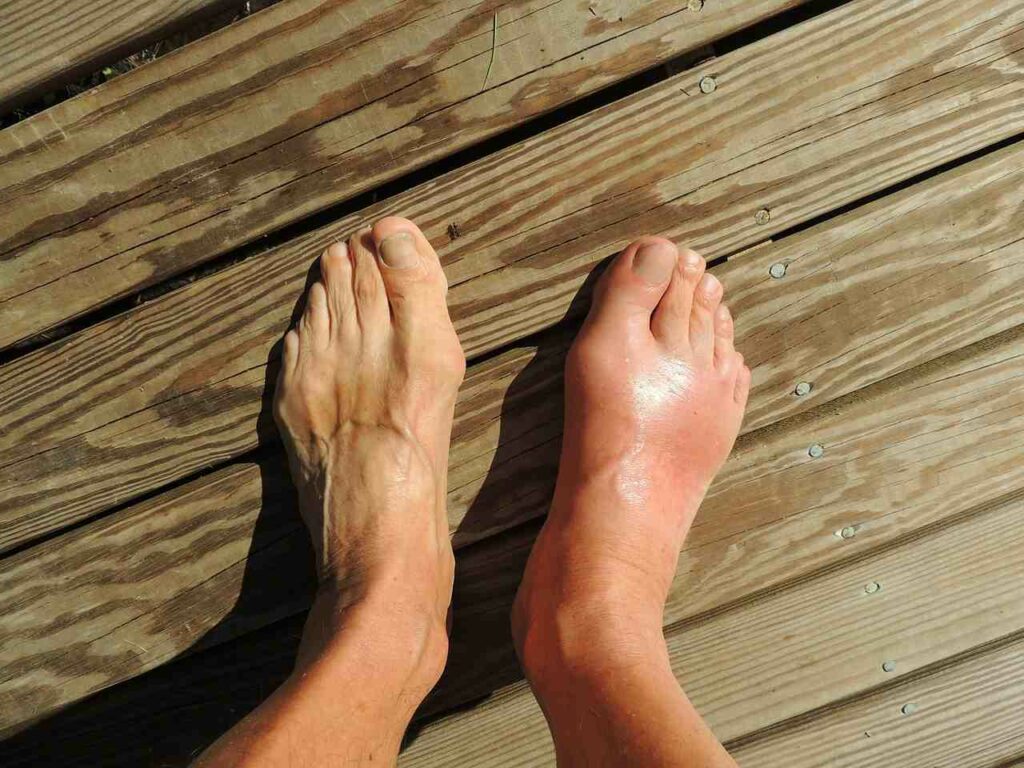Cuboid syndrome is a condition that affects the cuboid bone in the foot. This small bone is located at the base of the foot. It plays an important role in stabilizing the ankle and arch. When this bone becomes damaged or misaligned, it can cause a variety of symptoms, including pain, swelling, and difficulty walking. In this blog post, we will discuss what cuboid syndrome is, how you can treat it, and how to prevent it from occurring.
Contents
What Is Cuboid Syndrome?
 Cuboid syndrome is a condition impacting the cuboid joint, located at the base of your foot. This small bone is crucial for stabilizing the ankle and arch. When it becomes damaged or misaligned, you may experience symptoms like pain or swelling, which can make walking difficult. Several things could contribute to Cuboid Syndrome, such as wearing improper shoes, sustaining an injury in the foot or ankle area, or repetitive stressors.
Cuboid syndrome is a condition impacting the cuboid joint, located at the base of your foot. This small bone is crucial for stabilizing the ankle and arch. When it becomes damaged or misaligned, you may experience symptoms like pain or swelling, which can make walking difficult. Several things could contribute to Cuboid Syndrome, such as wearing improper shoes, sustaining an injury in the foot or ankle area, or repetitive stressors.
Fortunately, there are a number of treatments available for individuals affected by cuboid syndrome. The first step is typically to modify your activities to reduce the amount of stress put on your feet. Depending on the severity of the condition, your doctor may recommend one or more non-surgical treatments, including physical therapy, the use of orthotic devices, and/or pain medication. In more severe cases, surgery may be required in order to realign the cuboid bone and help relieve your symptoms.
Treatment Of Cuboid Syndrome

It goes without saying that having this illness will make you feel worse. The greatest cures for the cuboid syndrome are:
Resting
Every doctor advises resting as the step to treat cuboid syndrome in order to reduce pain and inflammation. This may involve an extended break from running or other high-impact activities, using a special walking boot or insert when you are on your feet for long durations.
Physical Therapy
While these things can often be enough to reduce the pain associated with cuboid syndrome, you may also want to consider some additional treatment options as well. Physical therapy can sometimes help to improve your symptoms and strengthen the muscles in your feet. In more severe cases of cuboid syndrome, surgery may be recommended to realign the bones and repair any damaged tissues.
Direct Manipulation
Direct manipulation of the cuboid by moving it with dorsal and plantar motions is another efficient treatment. The cuboid may pop when it settles back into position, and the patient and podiatrist may hear or feel it. The tiny Super Ball movement, which involves rolling and pumping the foot down over the ball at the cuboid position, is one of the greatest at-home treatments.
Compared to golf balls, Super Balls are a little softer and provide better traction against the foot. (I buy little bags of balls and give them to patients when they want them.) Although this is a little unpleasant, the patient is reassured that applying it once or twice a day for three to five minutes will fast make the discomfort go away.
Whip Method
Apply pressure with the thumb on the plantar surface of the cuboid when patients lie prone with their knees bent. After that, thrust quickly while making a fast plantar to dorsal motion. Squeezing the patient’s ankle while it is dorsiflexed allows one to squeeze the cuboid while also applying pressure to the midfoot region. With one hand on the dorsum and the other on the plantar side of the foot.
Sometimes traction of the fourth and fifth metatarsals can help the cuboid settle into place by grabbing around the second metatarsal as a single unit and pulling distally.
Reducing Your Risk For Cuboid Syndrome
There are several things that increase the risks of developing cuboid syndrome. These are:
- Play sports where your feet have to pivot on their sides, such as basketball or tennis.
- Wear shoes with minimal support and cushioning in the heel area.
- Traumatic injuries disrupt the normal anatomy of the foot, especially if they occur when you’re an adolescent.
- Wear high heels on a regular basis, since this can cause misalignment of the feet and increase your risk for cuboid syndrome.
If you think that you might be at risk for developing cuboid syndrome, there are several things that you can do to help reduce your risk. These include:
- Wear shoes with good cushioning and support in the heel area, especially when playing high-impact sports like tennis or running.
- Keep your feet strong and flexible by doing regular exercises that focus on improving balance and stability.
- Avoid wearing high heels whenever possible, and if you do wear them, choose ones that are low or medium height and have a supportive ankle strap.
- See your doctor or podiatrist regularly for check-ups, so you can identify any problems with your feet as early as possible.
So these are some of the things you can do to help reduce your risk for cuboid syndrome. Remember that prevention is always the best approach, so try to take care of your feet and keep them healthy in order to avoid this painful condition. With proper care and attention, you can dramatically reduce your chances of developing cuboid syndrome and lead a happy, healthy life.
Recovering From Cuboid Syndrome
 Cuboid syndrome pain usually goes away within a few days of a minor foot injury. But in severe cases, it several months to fully recover if an ankle sprain or other serious injury is the culprit. To guarantee a speedy recovery:
Cuboid syndrome pain usually goes away within a few days of a minor foot injury. But in severe cases, it several months to fully recover if an ankle sprain or other serious injury is the culprit. To guarantee a speedy recovery:
- If your physician advises it, consult a physical therapist.
- After a hard workout or physical activity, rest your foot for a few hours.
- To give your feet a break, mix up your workout or cross-train.
- Warm up before a workout to prevent sprains or other injuries to the muscles in your feet and legs.
- If your doctor determines that you have a significant sprain, wear a cast or splint.
Conclusion
Cuboid syndrome occasionally results from an underlying ailment like arthritis. Before attempting to treat cuboid syndrome with manipulations or wraps, consult a doctor. If you experience ongoing pain on the lateral side of your foot rule out any other diseases.
It isn’t a dangerous ailment. You can simply take care of it yourself, with the help of your doctor, or with physical therapy. Even though some cases can actually take many months, the outlook for a full recovery is great when it is accurately detected and can be realized in just a few short days.
Physical Therapy help patients recover from pain. If you’re experiencing Back pain, Shoulder pain, Knee pain, Neck pain, Elbow pain, Hip pain, or Arthritis pain, a physical therapist at MantraCare can help: Book a physiotherapy session.


